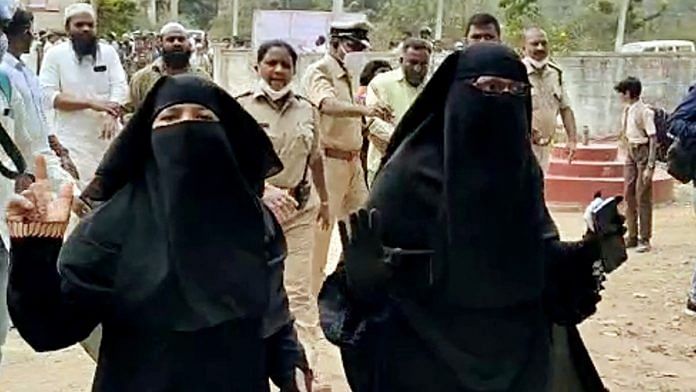After graduating from class 10, as is the norm in Karnataka, I shifted to a new college to finish my pre-university education. I was extremely anxious about starting life anew, making new friends and creating a name for myself from scratch in this new place and the fact that my own mother was the principal of the college only added to my anxiety.
I vividly remember how on the first day of class, not wanting to draw attention to myself, I had quietly gone and sat down in the corner seat of the last bench in the classroom. A few moments later a girl walked up to me, she had a beautiful smile on her face and had covered her head with a black cloth. She told me her name was Ayesha and asked if she could sit next to me and I readily agreed. Although I was apprehensive of my classmates harbouring hostility against me because of my association with the principal, I instantly warmed up to Ayesha’s friendly smile and kind eyes.
Over the course of the next two years that I spent in that college, we became really good friends. We would sit next to each other during classes, share lunch and even help each other out with assignments and classwork. Over time we realised how diametrically opposed our socio-cultural backgrounds were— she was from a small village on the outskirts of Mysuru and I was from the city, her parents were blue-collar workers while mine were engaged in the education sector; she was a Muslim and I, a Hindu. But we never let these differences spill over into divisions. Sitting amidst a crowd of bored and chatty teenagers we both stood out, I because of my mother and she because of her beautiful black hijab, and yet not once did we feel singled out or lonely as we stood by each other throughout.
Also read: The real issue in Karnataka hijab row is how secularism is defined wrongly – Nehru to Modi
What has changed in Karnataka?
This was the Karnataka that I grew up believing in— socially secure and culturally diverse. It was absolutely shattering for me to see this beautiful state being torn apart by an unwarranted controversy over Muslim girls wearing a hijab to class in a government college in the Udupi district. The Kundapura government college authorities’ newfangled ‘solution’ of either disallowing hijab-clad girls inside the campus or seating them in segregated classrooms without conducting any classes is ill-thought-out at best and polarising at worst. It sets the clock of societal progression back by several decades.
Having just emerged out of a prolonged hiatus from normal academic engagement that the pandemic had forced students into, it is deeply anguishing that not only has this issue led to suspension of classes for three days all over the state but has also disrupted the education of several Muslim girls who have been left in the lurch by the government. What started as a college scuffle has today snowballed into a wider religious debate paralysing the educational infrastructure in the state.
Whether or not religious markers should be permitted inside educational institutions is a moot discussion as India neither follows a French model of secularism nor does any prevailing law impose any such specific sartorial restrictions. On the contrary, for years we have had people from the Sikh community wearing pagris, Christians wearing crucifix necklaces and even Hindus wearing bindis and mangalsutras, both within and outside schools and colleges despite all of them being clear and explicit symbols of religious affiliation.
The vaguely worded changes in the dress code guidelines that were hurriedly introduced in the wake of the controversy, right in the middle of the term, just two months before the board exams are deeply vexatious and leave a lot of room for ambiguity and misuse. It is important to note that these girls did not just wake up one day and decide to wear a hijab to their college. Rather, it had been the norm for many years and therefore, these unforeseen changes in the guidelines will most definitely result in many girls having to discontinue their education. This is a matter of serious concern for a state with average female literacy figures.
The way in which the events have unfolded in Karnataka over the past week and the manner in which the flare-up has been mismanaged is undoubtedly a major setback to not just the state government but also the Centre and its much-touted ‘Beti Bachao Beti Padhao’ initiative. It is high time we realise the detrimental effect of dividing education into the lines of blue, black and saffron can have on the nation’s development and instead join hands in pursuit of the iridescence of enlightenment.
The author is a student at Jindal Global Law School, Sonipat. Views are personal.




